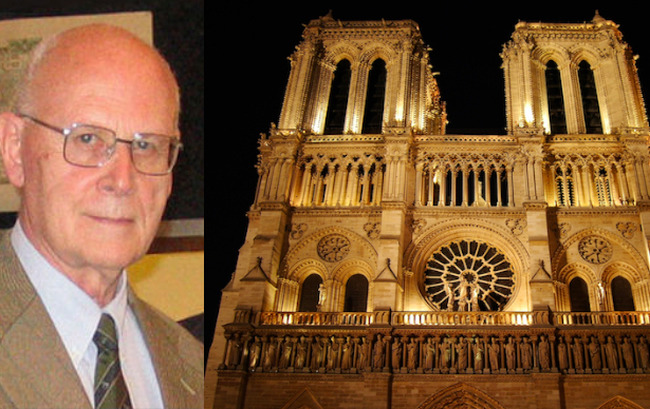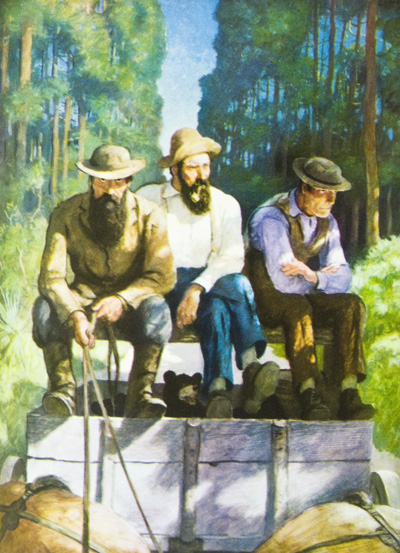“Why were you so ungrateful to our gods
as to desert them for the Jews?”
—Julian, addressing the Christians

Priscus: I can. And you certainly can! After all, you were living in Antioch while that little beast was Caesar.
Curiously enough, Julian almost never mentioned Gallus to me, or to anyone. I have always had a theory—somewhat borne out by the memoir—that Julian was unnaturally attracted to his brother. He continually refers to his beauty. He also tends to write of him in that hurt tone one uses to describe a lover who has been cold. Julian professes to find mysterious what everyone else found only too obvious: Gallus’ cruelty. Julian was naïve, as I find myself continually observing (if I repeat myself, do forgive me and blame it on our age).
Libanius. Yes, I do know. At the beginning, we all had great hopes for Gallus. I recall vividly Gallus’s first appearance before the senate of Antioch. How hopeful we were! He was indeed as handsome as men say, though that day he was suffering from a heat rash, as fair people sometimes do in our sultry climate. But despite a mottled face, he carried himself well. He looked as one born to rule. He made us a most graceful speech. Afterwards, I was presented to him by my old friend Bishop Meletius.
During the next few years the misdeeds of the couple were beyond anything since Caligula. Gallus sent his own guards into the senate chamber, arrested the leading senators and condemned them to death.
The Memoir of Julian Augustus
In the autumn of 353, Gallus made a state visit to Pergamon. It was the first time we had met since we were boys at Macellum. I stood with the town prefect and the local dignitaries in front of the senate house and watched Gallus receive the homage of the city.
During the five years since we had seen one another, I had become a man with a full beard. But Gallus had remained exactly as he was, the beautiful youth whom all admired. I confess that I had a return of the old emotion when he embraced me formally and I looked once again into those familiar blue eyes. What was the old emotion? A loss of will, I should say. Whatever he wanted me to do I would do. Gallus, by existing, robbed me of strength.
“Constantia wants to know you. She talks of you often. But of course she couldn’t come here. One of us must always be at Antioch. Spies. Traitors. No one is honest. Do you realize that? No one. You can never trust anyone, not even your own flesh and blood.”
I tried to protest loyalty at this point. But Gallus ignored me. “All men are evil. I found that out early. They are born in sin, live in sin, die in sin. Only God can save us. I pray that he will save me.” Gallus made the sign of a cross on his bare chest. “But it is a fine thing in an evil world to be Caesar.”
I must say I was stunned by this particular self-estimate. But my face showed only respectful interest.
“I build churches. I establish religious orders. I stamp out heresy whenever I find it. I am an active agent for good. I must be. It is what I was born for. Do you have girls in you household?”
“One.” My voice broke nervously.
“One!” he shook his head wonderingly. “And your friend? The one you live with?”
“Oribasius.”
“Is he your lover?”
“No!”
“I wondered. It’s perfectly all right. You’re not Hadrian. What you do doesn’t matter. Though if you like boys, I suggest you keep to slaves. It’s politically dangerous to have anything to do with a man of your own class.”
“I am not interested…” I began, but he continued right through me.
“Slaves are always best. Particularly stableboys and grooms.” The blue eyes flashed suddenly.
♣
The rest of the story is well known. Gallus and his “jailers” took the overland route through Illyria. All troops were moved from the garrisons along the route, and Gallus could call on no one to support him. At Hadrianopolis, the Theban legions were indeed waiting, but Gallus was not allowed to see them. He was now a prisoner in all but name. Then in Austria, he was arrested by the infamous Count Barbatio, who had been until recently the commander of his own guard. Gallus was imprisoned at Histria; here his trial was held. The Grand Chamberlain Eusebius presided.
Gallus was indicted for all the crimes which had taken place in Syria during the four years of his reign. Most of the charges against him were absurd and the trial itself was a farce, but Constantius enjoyed the show of legality almost as much as he disliked the idea of justice. Gallus’s only defense was to blame his wife for everything. This was unworthy of him; but then there was nothing that he could say or do which would save him. Also, by accusing Constantius’s sister of a thousand crimes (she was guilty of many more), Gallus was able to strike one last blow at his implacable enemy. Furious at the form the defense took, Constantius ordered Gallus executed.
My brother’s head was cut off early in the evening of 9 December 354. His arms were bound behind him as though he were a common criminal. He made no last statement. Or if he did, it has been suppressed. He was twenty-eight when he died. They say that in the last days he suffered terribly from bad dreams. Of the men of the imperial family, only Constantius and I were left.
On 1 January 355 a warrant was issued for my arrest. But by then I had joined a religious order at Nicomedia. I am sure that at first none of the monks knew who I was, for I had come to them with head shaved and I looked like any other novice. Oribasius also protected me. When the imperial messenger arrived at Pergamon to arrest me, Oribasius said that I had gone to Constantinople.
I was a monk for six weeks. I found the life surprisingly pleasant. I enjoyed the austerity and the mild physical labor. The monks themselves were not very inspiring. I suppose some must have had the religious sense but the majority were simply vagrants who had tired of the road and its discomforts. They treated the monastery as though it were some sort of hotel rather than a place to serve the One God. Yet they were easy to get along with, and had it not been for the Galilean rituals I could have been quite happy.
♣
As we were leaving Nicomedia, I noticed a head on a pike. I hardly glanced at it, since there is almost always the head of some felon or other on display at the main gate of every town.
“I am sorry,” said Victor suddenly. “But we were ordered to use this gate.”
“Sorry for what?”
“To lead you past your brother’s head.”
“Gallus?” I turned clear around in my saddle and looked again at the head. The face had been so mutilated that the features were unrecognizable, but there was no mistaking the blond hair, mattered it was with dirt and blood.
“The Emperor has had it displayed in every city in the East.”
I shut my eyes, on the verge of nausea.
“Your brother had many qualities,” said Victor. “It was a pity.” Ever since, I have respected Victor. In those days when secret agents were everywhere and no man was safe, it took courage to say something good of a man executed for treason.
At Ilios I was taken round by the local bishop. At first my heart sank: a Galilean bishop was the last sort of person who would be interested in showing me the temples of the true gods. But to my surprise, Bishop Pegasius was an ardent Hellenist. In fact, he was the one who was surprised when I asked him if we might visit the temples of Hector and Achilles.
“But of course. Nothing would give me greater pleasure. But I am surprised that you are interested in old monuments.”
“I am a child of Homer.”
“So is every educated man. But we are also Christians. Your piety is well known to us even here.” Then Pelagius proceeded to show me the temples of Athena and Achilles, both in perfect repair. I noted, too, that whenever he passed the image of an old god, he did not hiss and make the sign of the cross the way most Galileans do, fearing contamination.
♣
Two days later, I was visited by the Grand Chamberlain himself. I found it hard to believe that this enchanting creature with his caressing voice and dimpled smile was daily advising the Consistory to execute me. He quite filled the small apartment where I had been confined.
“Oh, you have grown, most noble Julian! In every way!” Delicately Eusebius touched my face. “And your beard is now most philosophic. How Marcus Aurelius would have envied you!” For an instant one fat finger rested, light as a butterfly, on the tip of my beard.
The cutting down of court ceremonies and the removal of the eunuchs was one of the first acts of my reign. It was certainly the most satisfactory.







